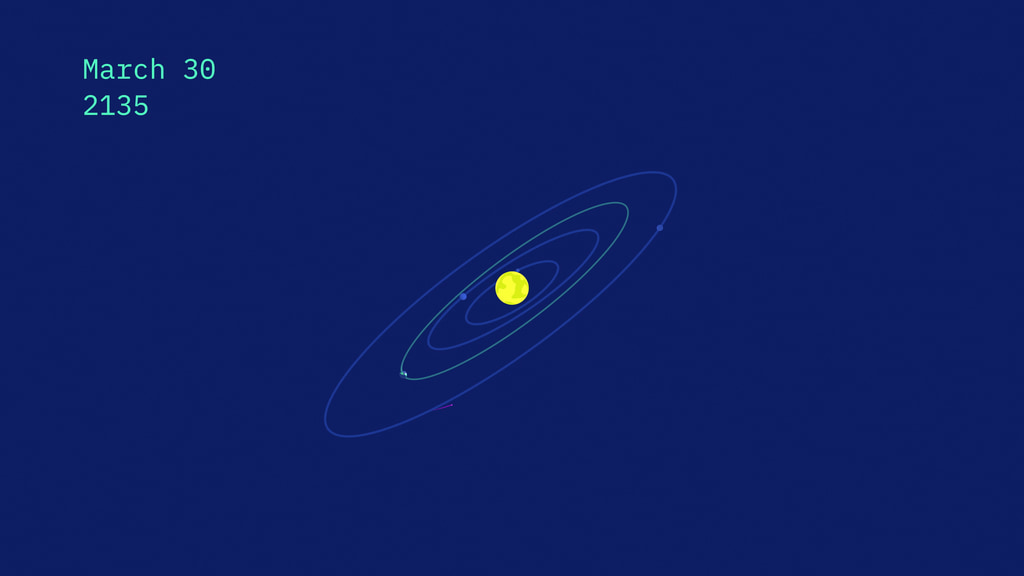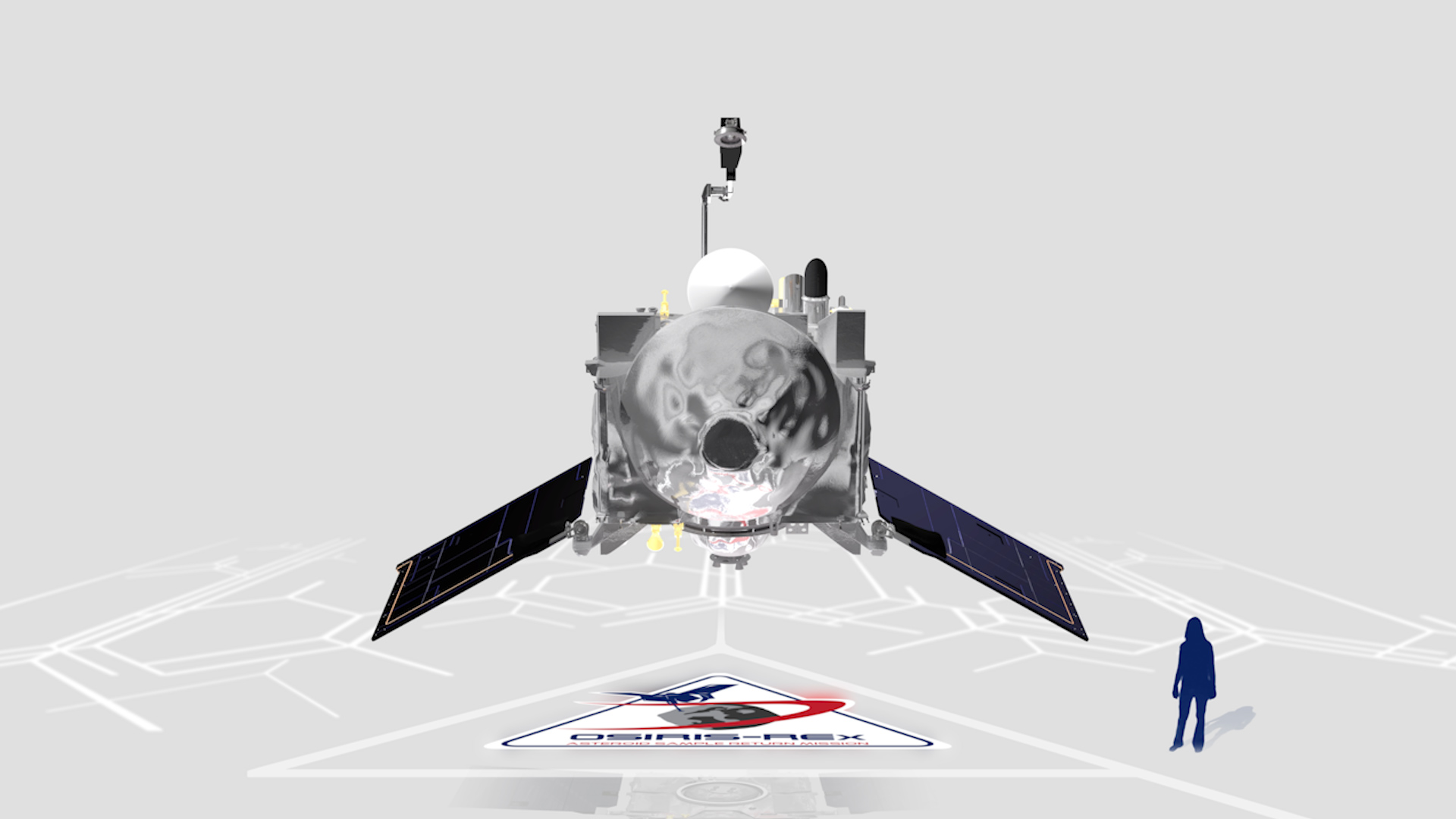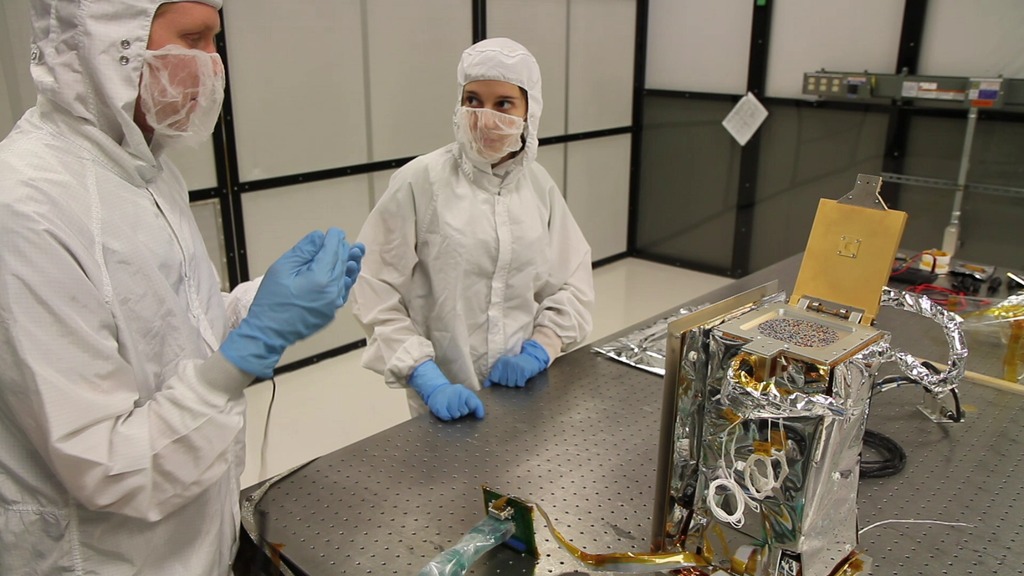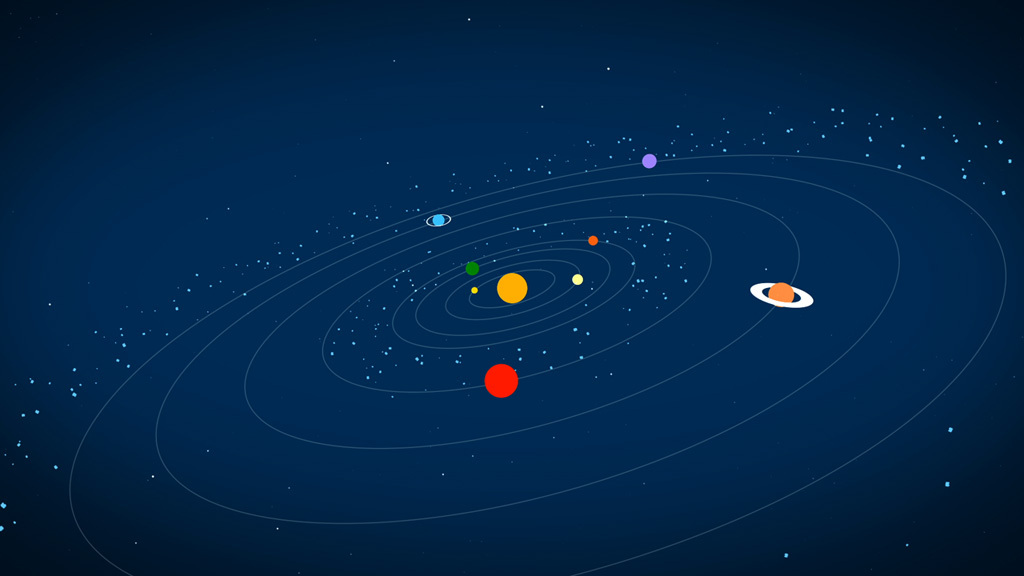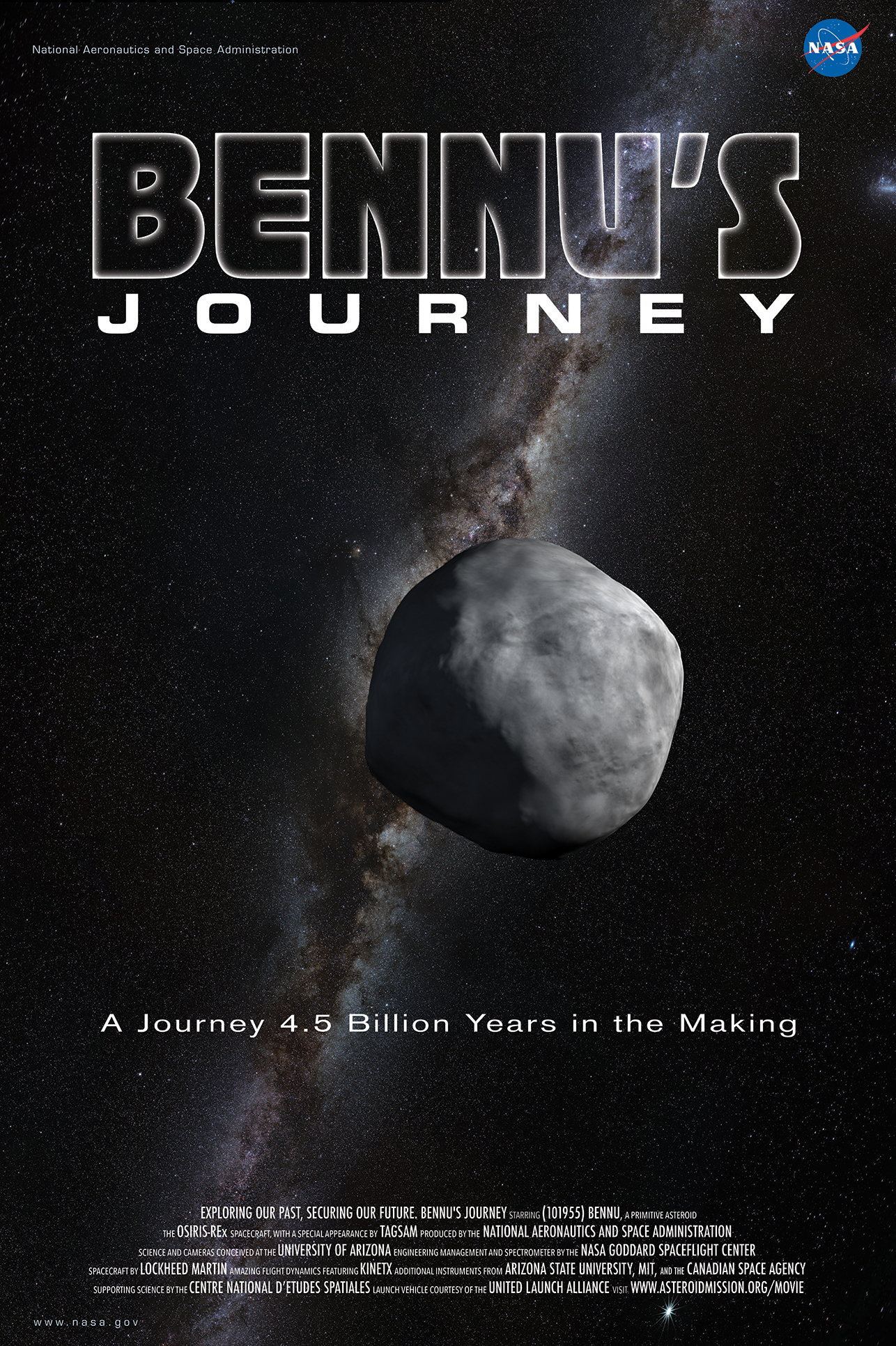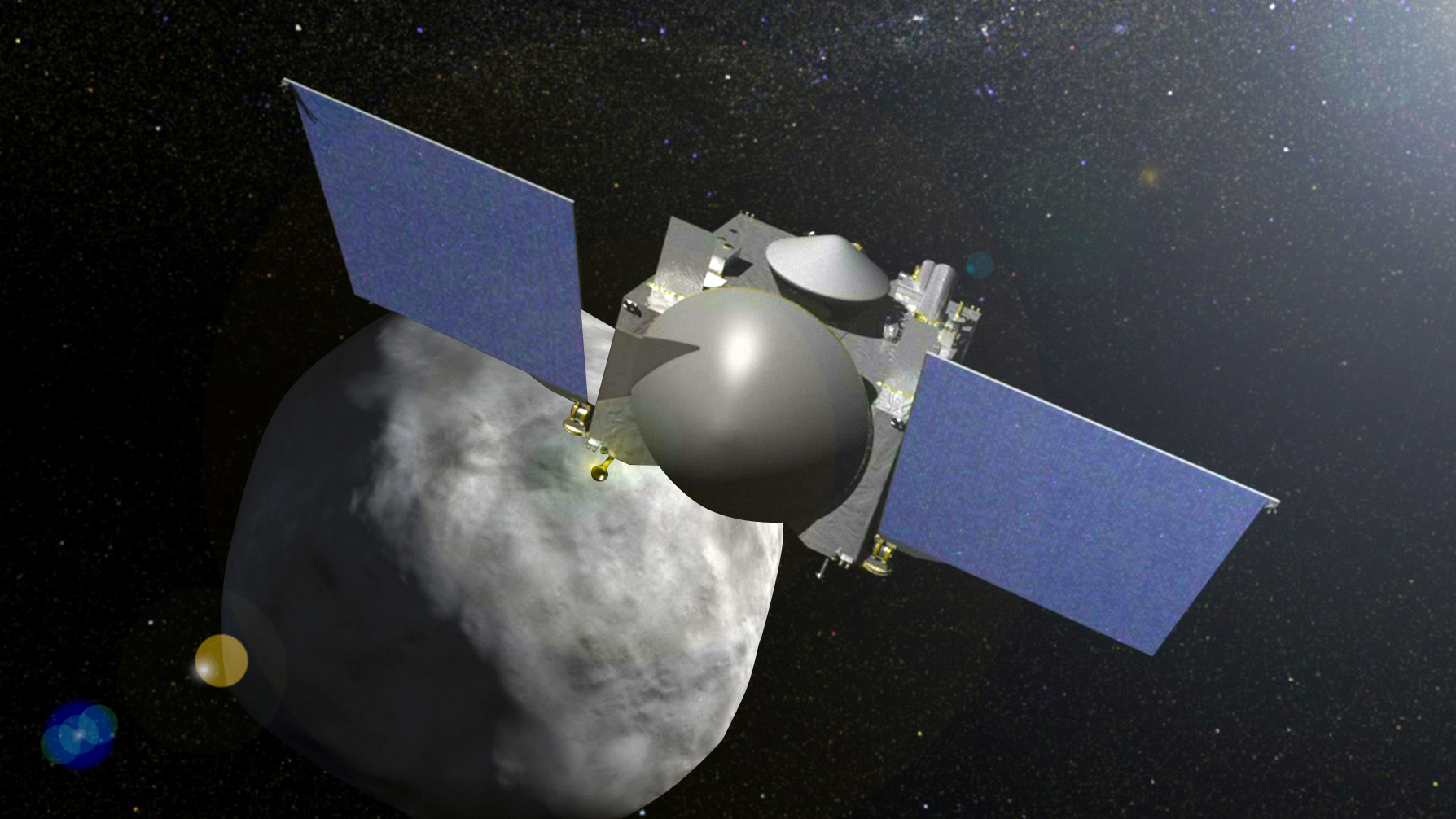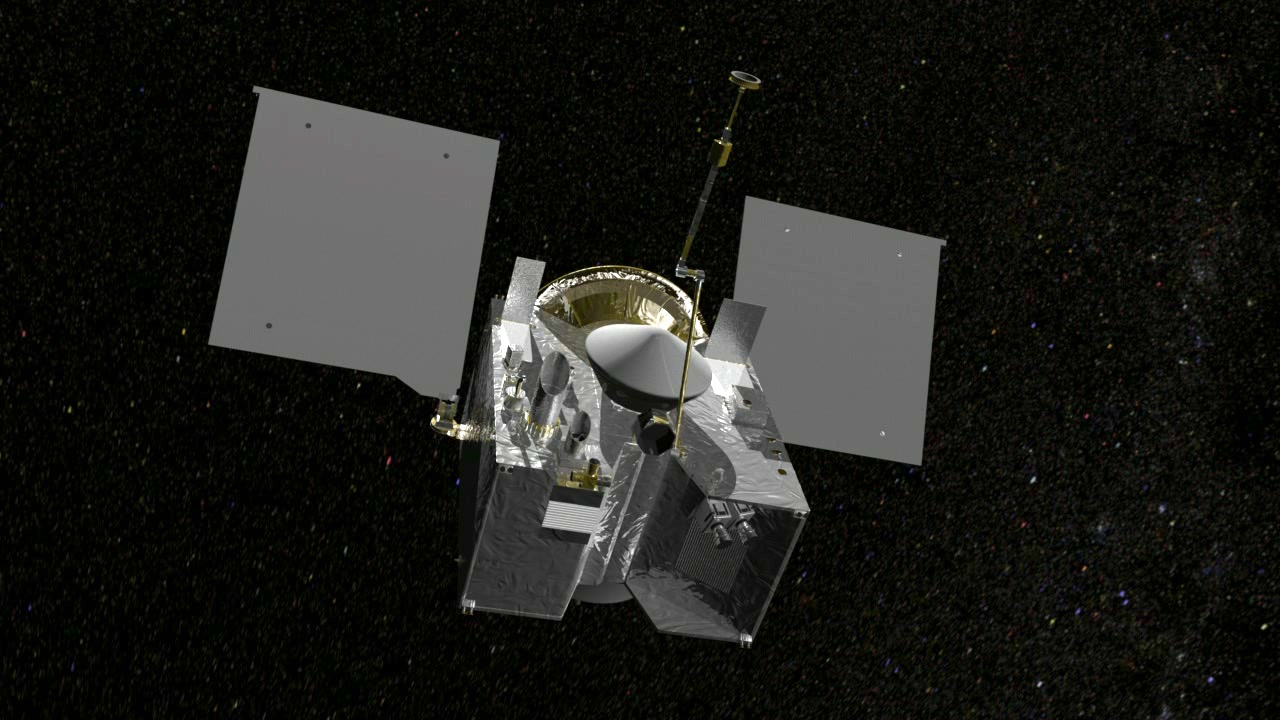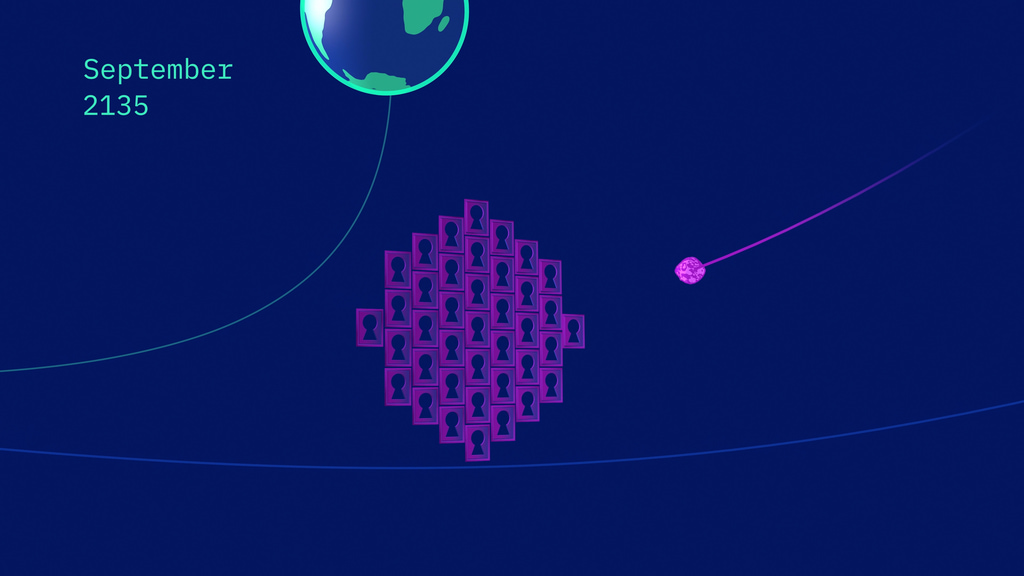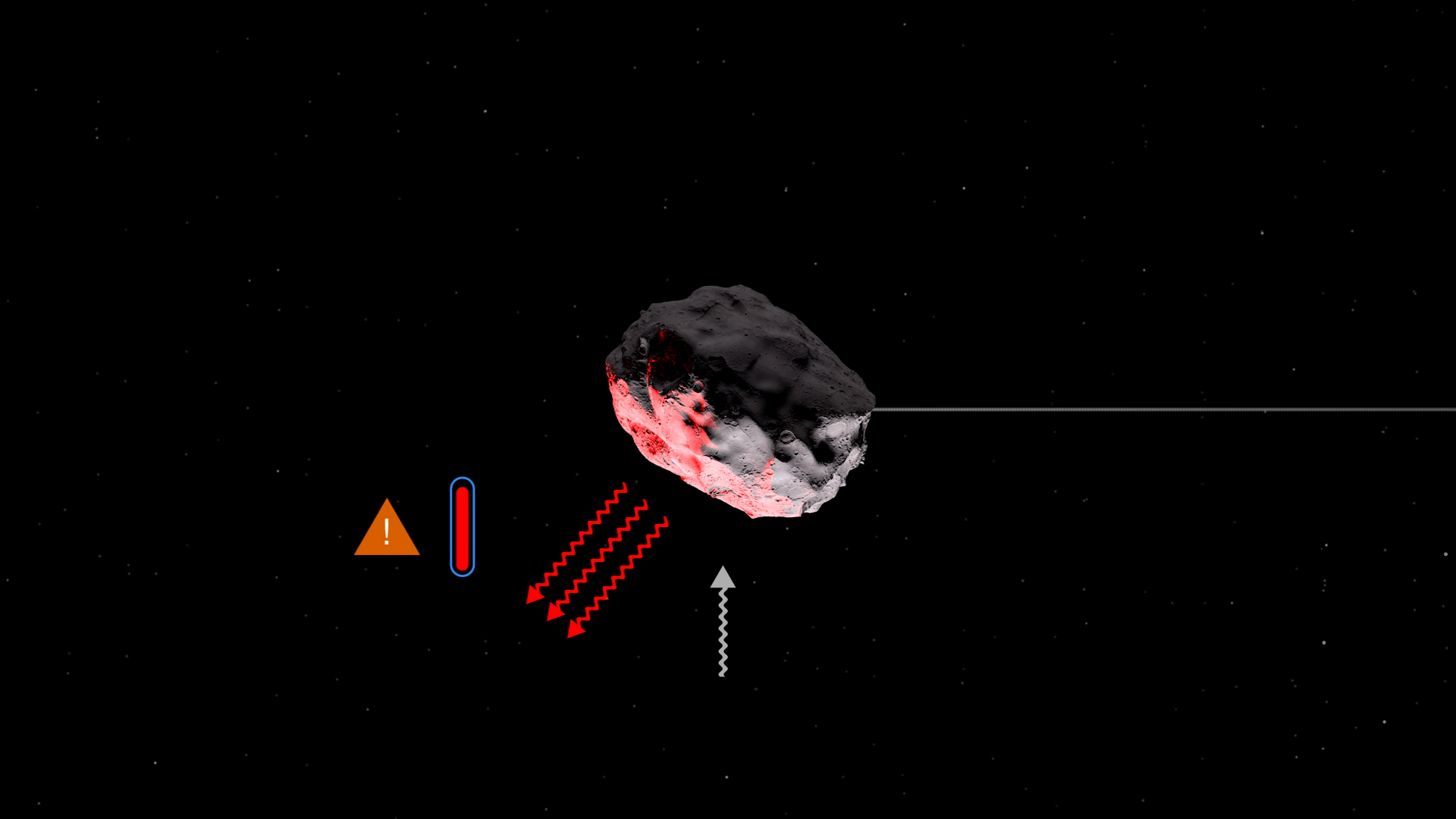How Sunlight Pushes Asteroids
Rotating asteroids have a tough time sticking to their orbits. Their surfaces heat up during the day and cool down at night, giving off radiation that can act as a sort of mini-thruster. This force, called the Yarkovsky effect, can cause rotating asteroids to drift widely over time, making it hard for scientists to predict their long-term risk to Earth.
Watch this video on the NASAexplorer YouTube channel.
For complete transcript, click here.
Near-Earth asteroids like Bennu pose a potential danger to our planet, so it's important to predict their orbits with great accuracy. Unfortunately, a phenomenon called the Yarkovsky effect can make these predictions difficult over long time periods. How does this effect work?
When sunlight strikes a rotating asteroid, the dayside heats up; as the asteroid turns, the night side cools and releases the heat, exerting a small thrust that can change the asteroid's direction over time. In order to learn more about this process on asteroid Bennu, NASA is sending a spacecraft called OSIRIS-REx to make detailed observations of Bennu's shape, brightness, and surface features. These factors are thought to influence the Yarkovsky effect, and understanding how will enable scientists to better predict the orbit of Bennu and other near-Earth asteroids.
ANIMATION - Sunlight alters the orbit of a rotating asteroid via the Yarkovsky effect.
For More Information
See the following sources:
Credits
Please give credit for this item to:
NASA's Goddard Space Flight Center
-
Animator
- Chris Smith (Self)
-
Narrator
- Chris Smith (Self)
-
Writer
- Chris Smith (Self)
-
Scientist
- Edward Beshore (The University of Arizona)
-
Producers
- Chris Smith (Self)
- Dan Gallagher (USRA)
Missions
This page is related to the following missions:Series
This page can be found in the following series:Tapes
The media on this page originally appeared on the following tapes:-
The Yarkovsky Effect
(ID: 2015063)
Monday, July 27, 2015 at 4:00AM
Produced by - Dan Jacob (Global Science and Technology, Inc.)
Release date
This page was originally published on Wednesday, July 29, 2015.
This page was last updated on Wednesday, May 3, 2023 at 1:49 PM EDT.
